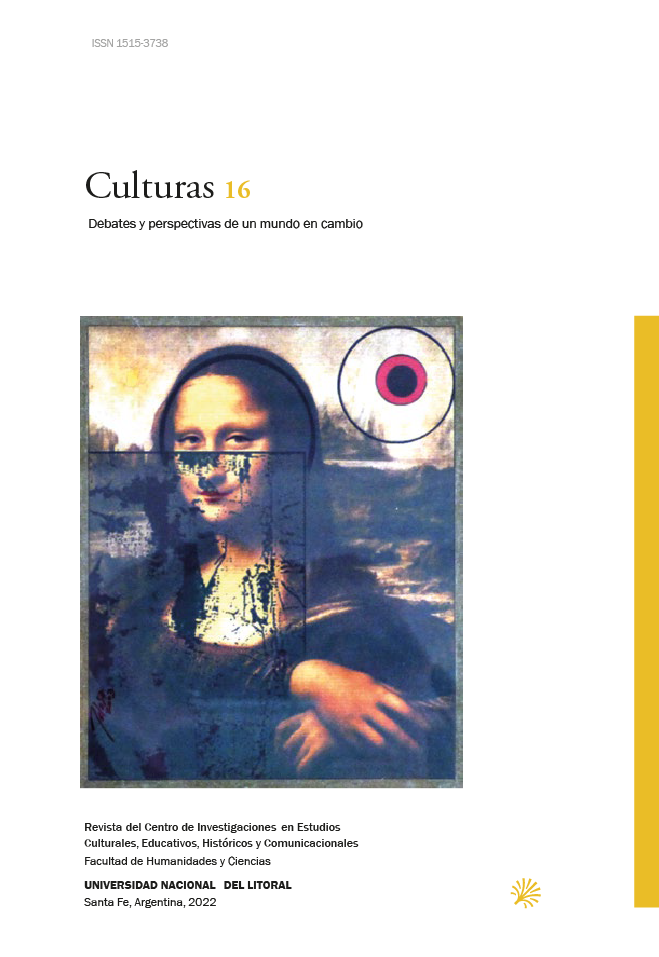Baroque narrative: devotional theatricality of Virgen de la Caridad in Chiapas, Mexico
DOI:
https://doi.org/10.14409/culturas.2022.16.e0001Keywords:
baroque, dramatism, staging, sculpture, corporal memory, narrativeAbstract
The present article exposes some of the historical and social conditions which took part in the emergence and expansion of baroque art over the seventeenth Century in Europe. It aims at showing the features of an artistic conception that developed both in Europe and all over the Spanish colonies of America and, still observable today in different regions of Mexico. Through the particular case of what occurs around the cult of La Virgen de la Caridad in the city of San Cristóbal de las Casas, in Southeast Mexico, it is aimed to expose how the arts of performance from baroque origins constituted a scenic culture in the indigenous and half–blood population of this region. A theatrical culture that takes part in the staging of living and from which new narratives have been shaped to bring out to scene their people’s social existence.
References
Alewyn, R. (1989). El gran teatro mundial: la época de los festivales cortesanos. München: Beck.
Arregui, J. (2002). Acerca del perspectivismo escenográfico y del teatro cortesano en la España de finales del siglo XVII y comienzos del XVIII. Castilla. Estudios de Literatura(27), 31–62.
Aubry, A. (2017). San Cristóbal de Las Casas. Su historia urbana, demográfica y monumental 1528–1990. San Cristóbal de Las Casas: Fray Bartolomé de Las Casas, A.C.
Balderas, G. (2017). La Reforma y la Contrarreforma. Dos expresiones del ser cristiano en la modernidad. Ciudad de México: Universidad Iberoamericana.
Biedma, A. (1998). La teatralidad como determinante cultural: ¿Una costante histórica? Boletín Millares Carlo(16), 113–128.
Echeverría, B. (2019). Vuelta de siglo. México: Era.
Fernández, A. (1993). Fiesta en Valladolid a la venida de Felipe IV en 1660. Boletin del Seminario de Estudios del Arte y Arqueología(59), 379–392.
Fernández, T. Z. (2016). La corte de Felipe IV se viste de fiesta. Valencia: Universidad de Valencia.
Maravall, J. A. (2012). La cultura del Barroco. Análisis de una estructura histórica. Barcelona: Ariel. Letras.
Martínez, G. (2003). En torno a Cosme Lotti: Nuevas aportaciones docuementales. Madrid. Revista de arte, geografía e historia(3), 323–354.
Melchor, J. (2013). Flores en estofados y textiles guatemaltecos en el periodo hispánico. En P. A. Díaz, El tejido polícromo. La cultura novohispana y su vestimenta (págs. 99–108). México D.F.: UNAM. Instituto de Investigaciones Estéticas.
Mumford, L. (1979). La ciudad en la historia. Buenos Aires: Infinito.
Romero, J. R. (2011). Reseña. Jan de Vos, editor. La guerra de las dos vírgenes. La rebelión del Los Zendales (Chiapas, 1712), documentada, recordada, recreada. Península. [en línea] Consultado el 20 enero del 2022 en https://www.revistas.unam.mx/index.php/peninsula/article/view/54074
Skrine, P. (1978). The baroque: Literature and Culture in the seventeenth Century Europe.Londres: Methuen & Co.
Tiltelnot, H. (1955). Anotazione sull' importanza della festa teatrale per la vita artistica e dinastica nel Barroco. Retórica e Baroco. Roma: Atti dell III Congreso Internazionale de Studi Umanistici.
Vos, J. d. (1986). San Cristóbal. Ciudad colonial. México D.F.: Instituto Nacional de Antropología e Historia.






